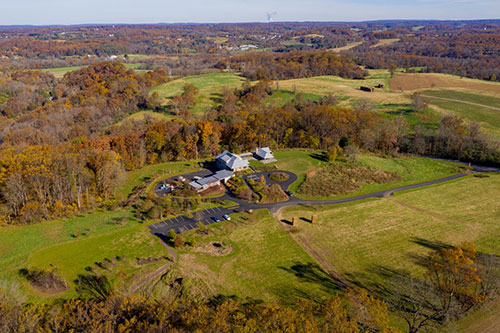Case Study — ChesLen Preserve

Location
Cannery Road, Unionville, PA
Size
Acres of woodland, meadow, and cultivated fields, including over 10 miles of public trails and almost two linear miles of the Brandywine Creek
Owner/operator
Natural Lands
Introduction
ChesLen Preserve was created in 2007 by an innovative partnership between a private landowner and philanthropist, Chester County, the Commonwealth, and Natural Lands. It is a publicly-accessible and well-used "node" for passive recreation along this scenic stretch of creek and features a management/visitors' center with sweeping views of the Brandywine valley. It also protects the "Unionville Barrens," a serpentine-based community of globally-rare plants.
Property Values
Return on Environment shows that homes within close proximity to large tracts of protected open space see significant gains to their property value as a result of this proximity. An estimated 11.5 percent of the value of homes within ½ mile of ChesLen Preserve is attributable to their proximity to the preserve. This amounts to approximately $42,900 per home for a cumulative increase in market value of $12.4 million.
Environmental Benefits
In addition to significant gains in property values, there are environmental service benefits that are measured in the cost per year to replace them if they were lost to development. The value of environmental benefits measured in this fashion and attributable to ChesLen Preserve total $3 million per year, and include cost savings related to water supply, water quality, flood mitigation, wildlife habitat, air pollution, and carbon sequestration. An estimated 700 tons of carbon are removed from the atmosphere annually by the trees at ChesLen, and over 18,000 tons of carbon are stored in the soils and vegetation of the Preserve.
Spotlight — Unionville Barrens
Essentially impossible to value economically, the globally-rare ecosystem at the Unionville Barrens only occurs in a few isolated locations across the world where ancient sea beds are exposed to the surface. This particular bedrock, called serpentine, breaks down into a low-nutrient soil with high levels of elements toxic to many plants. The assemblage of plants that can overcome the toxicity is specific to the "archipelago" of mid-Atlantic barrens sites that appear along a line from Philadelphia to Baltimore. Ironically, if such sites are left alone, more common plants can slowly creep in from their margins and ultimately push out the more delicate natives. Such was the case when Natural Lands purchased the property in 2008. Natural Lands is now implementing a detailed, multi-year plan to restore the barrens to its former extent and diversity.


